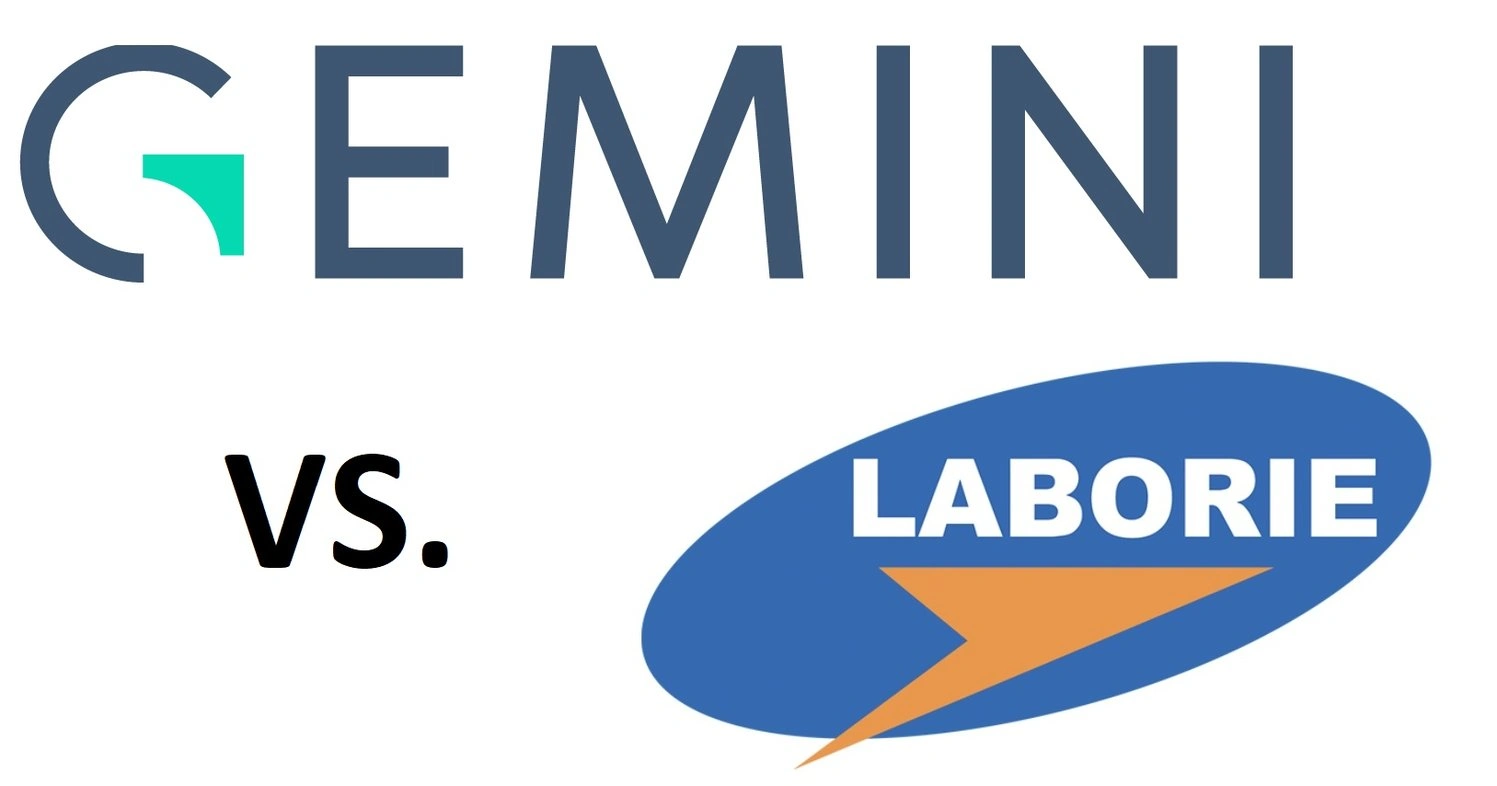Urodynamics Catheters — The Battle Is on in 2023
Conflict comes in many forms, and urology practices aren't immune to the fallout. From friendly rivalries to all-out supplier wars, this field packs more competitive punch than you might expect. The ongoing battle over urodynamics catheters from Laborie Medical and Gemini Medical couldn't be a better example.

What do urodynamics catheters — something you'd assume might be relatively uncontroversial — have to do with what's shaping up to become a massive market brouhaha? And could urology practices benefit no matter who comes out on top? Let's dive into the battle to find out more — from a safe distance, of course.
Sizing Up the Competitors
If you’ve been around a while, you already certainly know Laborie Medical, but you may not know of Gemini Medical. For those unfamiliar with the two companies, here’s a quick rundown:
Gemini Medical and Atmos Catheters
Gemini Medical is a small Florida company with fewer than 50 employees. Established in the last few years, the firm got its start when a group of urologic specialists decided there weren't enough options on the market. The founders wanted to give patients and physicians more choices when it came to catheters and consumables. Their efforts culminated in the introduction of Gemini's well-received Atmos air-charged catheter series.
Laborie Medical and T-DOC Catheters
Laborie Medical is the more established and much larger of the two manufacturers. This New England device manufacturer has been around since the late 1960s. It had around 1,000 employees at the time of this writing, having been acquired by a Swedish private equity firm in the mid-2010s. Today, Laborie is the largest player in urodynamics equipment and disposables by a long shot: Its T-DOC air-charged catheters are the most widely used, and it produces a vast range of other products.
IP Uncertainty
Some market rivalries are fairly tame. So what makes this one such a nail-biter?
As with many conflicts, the problem concerns the history between the competitors. In this case, it revolves around the possession and use of intellectual property.
Remember the T-DOC catheter line that keeps Laborie on top of the market? Well, there's a slight issue — the people who founded T-DOC before selling it to Laborie Medical were the same ones who founded Gemini Medical shortly afterward. Oops!
Obviously, the T-DOC founders waited out their non-compete clause, then re-entered the market with effectively the same product. If there has been any legal wrangling, it has been behind closed doors. The real intrigue involves how Gemini is getting around Laborie's patents.
What’s Going on at Gemini Medical?
Perhaps Gemini discovered a loophole. This wouldn't be too much of a shock considering that the founders knew the T-DOC patents inside and out. It's also possible that the technologies covered by the patents weren't comprehensive enough to apply to what Gemini is currently doing with its Atmos catheters.
For instance, if the T-DOC devices were largely protected by design patents (which cover the appearance of an article and not its functional features) then there could be room for Gemini to explore similar functionality via a modified catheter design. Alternatively, if the original patents were utility patents (covering the machine, process, composition, or manufacture), then a sufficiently new design might be enough to put the company in the clear.
Of course, it could also be far simpler. The old patents may have just expired, leaving Gemini free to compete. Although you'd think Laborie's legal team would be on guard for this kind of behavior, it's not unfathomable that things might slip their watchful gaze. After all, the company has quite a portfolio of devices and intellectual property to manage. There can also be a disconnect between private-equity leadership and what happens on the front lines.
Gemini Atmos Catheters vs. Laborie T-DOC Catheters
It might help to look closer at the features and functionalities that make these catheters different, but it's not quite obvious. Both are air-charged. Both also seem to support color-coded luers for easier use. If you saw them next to each other on a sterile procedure tray, you might not know which was which.
Interestingly enough, even Gemini's side-by-side comparison in an in vivo flow cystometry study showed that the two device families had comparable performance. After accounting for intrinsic and extrinsic variations, both catheters exhibited similar baseline, peak, and overall pressures.
Drawing Functional Distinctions
Despite the similarities, there may be some discrepancies in the realm of patient comfort. Gemini advertises its Atmos catheters as having the smallest outer diameter available on the market, which is a plus for patient comfort. They also use a polyurethane composition designed to soften when placed inside the body, allowing the catheters to adapt to patient movements instead of remaining rigid.
T-DOC catheters, on the other hand, seem to focus on ease of use and consistency. Their features reduce their sensitivity to patient movements and allow for quick, simple setups. These devices are also compatible with the Laborie Intelligent Cath-ID System, which enhances their traceability and auditing simplicity with features like integrated RFID technology. However, the RFID technology can create product “lock in” and create challenges if a user wants to switch catheter types later for economic or functionality reasons.
Again, none of this should be a wild shock to anyone following along — no need to stop the presses. No matter the field, it's not uncommon for businesses to stake their competitive claims on what are effectively minor distinctions. As long as you've got enough of an edge to differentiate your product from the alternatives, you can still succeed as a device and disposables manufacturer.
The Bottom-line Difference
There's one game-changing distinction we've been glossing over: price. Gemini Atmos catheters are significantly cheaper, coming in at around 40 percent less than you'll pay for comparable T-DOC catheters.
This state of affairs can only last so long. There are signs that Laborie is waking up to the competitive threat posed by a product with just the right number of killer features in a more affordable, sleeker package. In some cases, the company is outright ditching its standard marketing plan by offering key customers price-matching options to keep them from switching over.
The Water-filled Option
There's a third player in this competition that typically goes unnoticed— or rather, many of them. Water-filled catheters are a longstanding alternative to air-charged devices, representing the original process and technology for urodynamics measurements.
So why don't more hospitals and medical practices immunize themselves against higher prices of air-charged catheters? We've written an in-depth comparison between the two options here, but as a quick recap, water catheters are:
More commonplace than air-charged devices,
Require pre-usage zeroing just like air-charged catheters do — but may also need flushing and extra calibration depending on the circumstances, and
Can be fussy due to their susceptibility to hydrostatic pressure variations, patient movements, ambient and internal temperature changes, and air bubbles in the water column. (But, all of these issues can be overcome easily with the right training.)
Putting Water-filled Catheters to Work in Clinical Practice
On the face of it, these factors may make water-filled catheters seem like an inferior alternative, but the reality is anything but. Just remember: Water-filled devices necessitate more training, but they're just as suitable for measuring and assessing patient conditions. What's more, you can procure them at a fraction of the cost you'd pay for Atmos or T-DOC catheters from Gemini or Laborie.
Another plus side of working with water-charged catheters is that they're a more mature technology. There's more available literature on dealing with variations, maintaining systems properly, and producing replicable diagnostic results. Of course, you might not have time to go through all this source material as a clinician, but having a good upskilling partner on your side can make it far simpler to stay current.
No catheter is impervious to factors like pressure transitions or operator error. No matter which type of hardware you're using, you need to be prepared. Having very knowledgeable staff, like you’ll find at Brighter Health Network, is the smartest choice. If you master your equipment and have the right staff, water-filled catheters are a viable alternative to air. Their well-established nature also means market competition factors might not make as much of a dent in your ability to provide excellent care.
The Lesson of Competition
The battle between Gemini and Laborie is good news. Sure, some investors might not feel that way. If you're anyone else, including clinicians, nurses, patients, and family members, it's hard not to see the possible benefits.
Laborie's history exemplifies this. Although the company had a noble, patient-centric start back in the day, its business practices have shifted dramatically since then. Following its private-equity-backed acquisition, the company has seemingly focused on a more intensive growth model, buying competitors left and right. Many of these M&A moves are immediately followed by higher prices.
This monopolistic-like practice is by no means out of place in the private sector. Unfortunately, it ultimately forces clinicians and patients to pay more for their medical equipment and disposables.
In the end, competition isn't a bad thing. As companies get bigger, they attract outside investment. It's only natural that their priorities might shift too. The free market can remedy this trend.
Make no mistake: Laborie still makes very capable hardware. But being forced to stay on its toes and compete with Gemini should spur it to reconsider what's important. Hopefully, the resulting innovation will prove beneficial for patients and providers alike.
Like this project
Posted Aug 29, 2023
I ghost-wrote this insider's look at how competition in the urodynamics catheters market could benefit urology practices.
Likes
0
Views
23
Clients


Draft

Brighter Health Network








